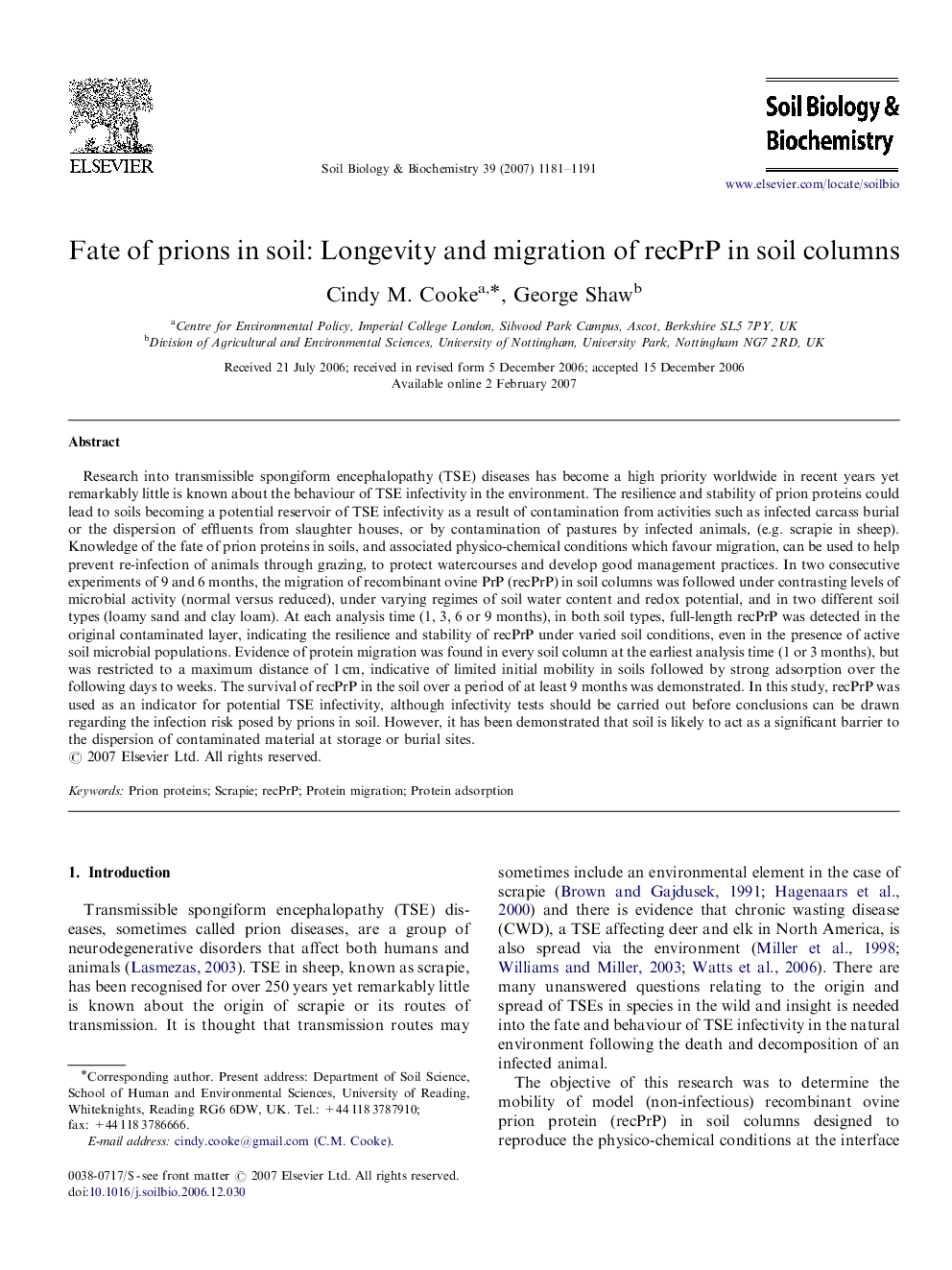| کد مقاله | کد نشریه | سال انتشار | مقاله انگلیسی | نسخه تمام متن |
|---|---|---|---|---|
| 2026425 | 1070029 | 2007 | 11 صفحه PDF | دانلود رایگان |

Research into transmissible spongiform encephalopathy (TSE) diseases has become a high priority worldwide in recent years yet remarkably little is known about the behaviour of TSE infectivity in the environment. The resilience and stability of prion proteins could lead to soils becoming a potential reservoir of TSE infectivity as a result of contamination from activities such as infected carcass burial or the dispersion of effluents from slaughter houses, or by contamination of pastures by infected animals, (e.g. scrapie in sheep). Knowledge of the fate of prion proteins in soils, and associated physico-chemical conditions which favour migration, can be used to help prevent re-infection of animals through grazing, to protect watercourses and develop good management practices. In two consecutive experiments of 9 and 6 months, the migration of recombinant ovine PrP (recPrP) in soil columns was followed under contrasting levels of microbial activity (normal versus reduced), under varying regimes of soil water content and redox potential, and in two different soil types (loamy sand and clay loam). At each analysis time (1, 3, 6 or 9 months), in both soil types, full-length recPrP was detected in the original contaminated layer, indicating the resilience and stability of recPrP under varied soil conditions, even in the presence of active soil microbial populations. Evidence of protein migration was found in every soil column at the earliest analysis time (1 or 3 months), but was restricted to a maximum distance of 1 cm, indicative of limited initial mobility in soils followed by strong adsorption over the following days to weeks. The survival of recPrP in the soil over a period of at least 9 months was demonstrated. In this study, recPrP was used as an indicator for potential TSE infectivity, although infectivity tests should be carried out before conclusions can be drawn regarding the infection risk posed by prions in soil. However, it has been demonstrated that soil is likely to act as a significant barrier to the dispersion of contaminated material at storage or burial sites.
Journal: Soil Biology and Biochemistry - Volume 39, Issue 5, May 2007, Pages 1181–1191